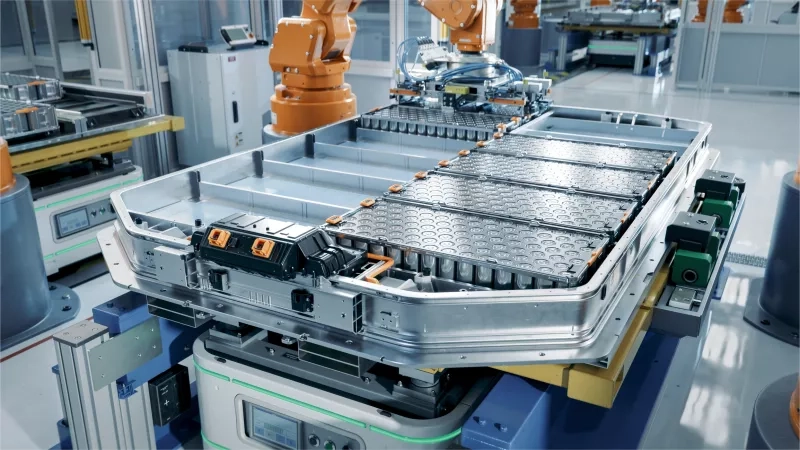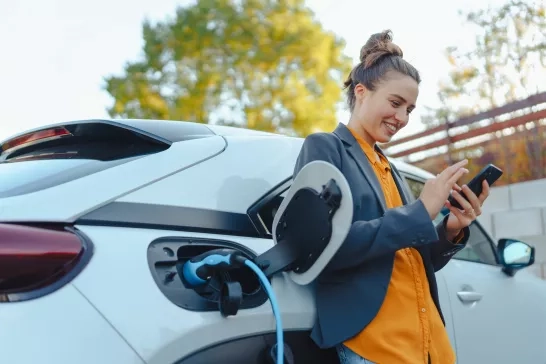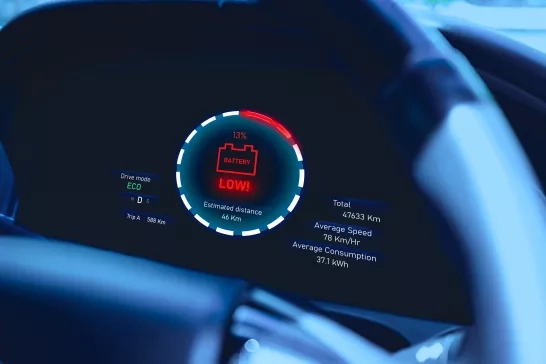
Are electric vehicles bad for the environment?
5 Minute Read
Everyone knows about the clean aspects of electric car batteries, but like any technology, there’s always a downside. Few would argue that electric vehicles aren’t without their faults – they’re often expensive, take time to charge, and, as the 2025 CAA EV Winter Test Drive discovered, their range in winter is often much less than the official range.
Their positive effect on the environment, however, is rarely brought into question. The presence of an electric-powered battery instead of an internal combustion engine allows these cars to roam the roadways without producing any harmful tailpipe emissions. But between manufacturing, charging and recycling them, these batteries may not be as green as they seem. It begs the question: Are electric car batteries bad for the environment?
Let’s follow an electric car battery through its life cycle to see where it’s helping the environment and where it’s not.
Raw materials
The environmental toll of electric car batteries begins before the product is even assembled, most notably in the mining of its active material, lithium. To extract lithium from the Earth, an immense amount of water is pumped down into salt flats, bringing mineral-rich saltwater to the surface. Lithium is filtered out of the mixture left behind after the water evaporates.
This water-intensive process is problematic for several reasons, including its potential to contaminate the water supply. Further complicating the issue is the location of these mines, many of which are found in challenging environments in Australia and China or remote locations in Manitoba and Quebec. More than half of the Earth’s lithium supply, however, is in an area called the Lithium Triangle, spanning Andean Mountain sections of Argentina, Bolivia and Chile. The area is one of the driest places on the globe, and lithium mining consumes as much as 65% of the region’s water, according to the United Nations.
Lithium isn’t the only potentially hazardous electric vehicle battery material. The process of mining for cobalt, the majority of which is done in the Democratic Republic of Congo, produces dangerous byproducts that can toxify the environment. Cobalt mine sites often contain sulphur, which generates sulfuric acid when exposed to air and water. This process wreaks havoc on rivers, streams and aquatic life, creating damage that can last for hundreds of years, according to the United Nations.
Production

Because of the methods required to mine for its raw materials and their subsequent environmental effects, battery production is likely the most environmentally damaging stage in the manufacturing of electric vehicles.
If you remove the lithium battery from the equation, the production of electric- and gas-powered vehicles is very similar and, thus, has nearly identical effects on the environment. Its inclusion, however, makes electric vehicle manufacturing slightly less environmentally friendly than that of gas-powered vehicles.
In-use
Critics of electric vehicles often argue that green cars aren’t truly green, pointing out that they rely on an electrical grid that may still use fossil fuels. This is partly true. Unless all the electricity used to charge an electric car battery comes from renewable energy, there are emissions tied to its use.
However, Canada's electricity grid is steadily transitioning to a mix of cleaner energy sources such as solar, hydro, wind, and nuclear power. According to Canada's Energy Fact Book 2024-2025, 70 per cent of Canada's electricity came from renewable sources, while 82% was generated from non-GHG emitting sources like solar, hydro, wind, and nuclear power.
Even when accounting for emissions from electricity production, studies indicate that electric vehicles generally produce fewer greenhouse gases over their entire lifespans compared to traditional gasoline-powered vehicles. This is due to their lack of tailpipe emissions.
Ultimately, as Canada's grid continues to go green, the environmental benefits of electric vehicles will only grow stronger.
Recycling
Electric and internal combustion vehicles have drastically different environmental effects when the cars are in use. But when it comes to recycling, the situation is completely reversed. As little as 5 per cent of the world’s lithium batteries are recycled, according to the American Chemical Society.
The dearth of recycled lithium batteries has significant economic repercussions, but it also takes a dire toll on the environment. Most lithium batteries end up in landfills, where their hazardous components can leak into the soil and groundwater. Landfills are also a major contributor of greenhouse gas emissions, the EPA reports. Recycling would also limit the need for mining raw materials, an environmentally destructive stage in an electric car battery’s lifespan.
So why are so few lithium car batteries recycled? In short, it takes a lot of time, money and effort. Unlike lead batteries, there’s no standardization when it comes to lithium car batteries. They often vary in size, shape and component ratios from one manufacturer to another. Each one, therefore, needs to be broken down differently, creating a high labour- and energy-intensive process. Making matters worse, battery packs are not designed to be disassembled. They can contain several thousand individual battery cells plus a complex system of circuitry and sensors. All these components are tightly packed together and secured in a plastic or aluminum case.
Like other aspects of electric vehicles, lithium battery recycling finds itself stuck in a chicken-and-egg problem. Due to the hurdles, governments and private companies have been hesitant to invest in large-scale recycling programs; however, improving recycling efficiency won’t occur without such efforts. However, we are beginning to see some changes.
Canadian companies, like Li-Cycle, are developing solutions that recover more than 95 per cent of all raw materials found in lithium-ion batteries to further reduce emissions at the end of an EV's lifecycle.
In conclusion: Are EV batteries bad for the environment?
Yes and no. Environmentally speaking, electric vehicle batteries are far from perfect: assembling them depletes the Earth of its natural resources; manufacturing them is energy-intensive; charging them requires dirty energy; recycling them is nearly impossible.
These negative effects, however, are offset by the absence of tailpipe emissions throughout the vehicle’s lifetime. Electric vehicles (EVs) offer significant environmental benefits, producing zero tailpipe emissions. However, the emissions from charging EVs can vary depending on the cleanliness of the power grid in each location. For the best greenhouse gas (GHG) results, EVs should ideally be charged using green energy sources like solar, wind, or geothermal power.
So, in short, electric vehicles are the more climate-friendly choice. That said, there’s room for improvement. More efficient manufacturing methods, greener electric grids and improved recycling options would benefit electric car batteries – and the environment – going forward.
This article has been adapted with permission by AAA Northeast.
Know before you buy: CAA North & East Ontario content aims to be neutral and informative. Whether you’re new to EVs or looking for a replacement vehicle, it’s important to ask questions, talk to experts and do a test drive with a dealership so you can make an informed decision.




